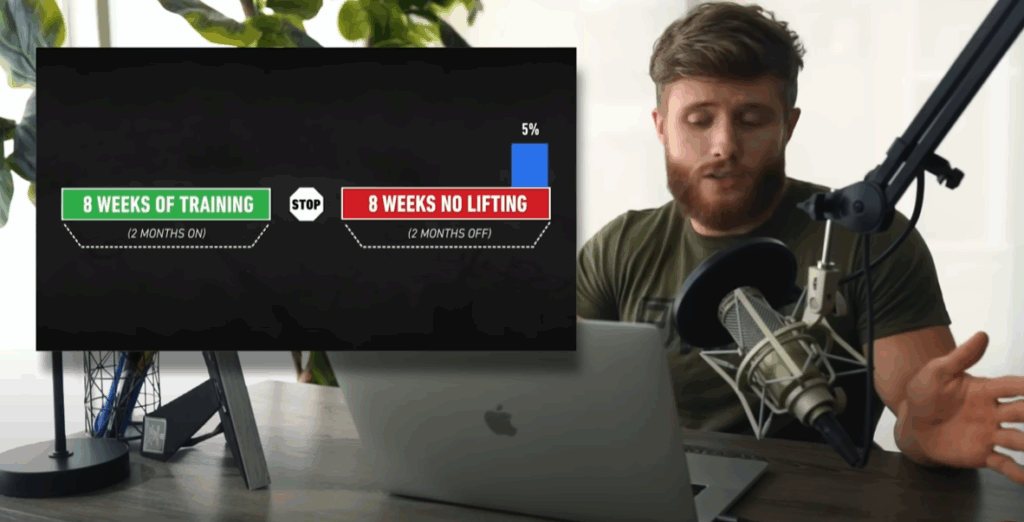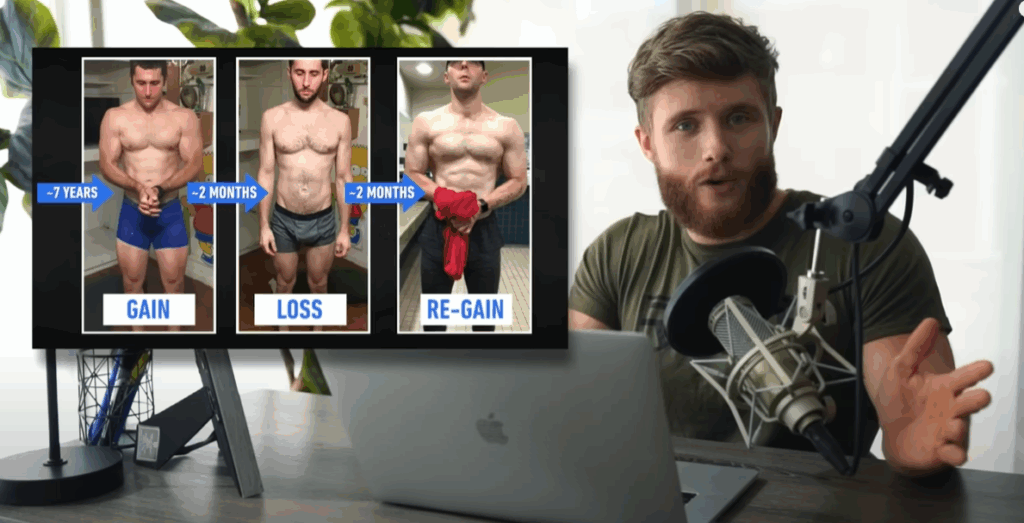What Really Happens to Your Muscle When You Stop Lifting Weights?
Life happens. Whether it’s due to injury, illness, travel, or gym closures, many lifters eventually face time away from training. And when they do, the first concern that pops up is: How fast will I lose my muscle if I stop lifting?
The answer is more nuanced than most people think. Thankfully, science has given us plenty of insight into what actually goes on in your body during periods of inactivity—and how you can minimize the damage.
Let’s break it down.

Muscle Loss Is a Gradual Process, Not an Instant Collapse
Muscle atrophy (the loss of muscle tissue) doesn’t happen overnight. Your body is constantly balancing muscle protein synthesis (building) and muscle protein breakdown. When you’re training regularly, the scales usually tip toward synthesis. But when you stop training, the balance starts to lean toward breakdown.
But this shift doesn’t happen immediately, especially if you remain physically active to some extent.
Doing Nothing vs. Doing Something: The Impact on Muscle
If you were to stop all physical activity and lie in bed all day, muscle loss would be rapid. A study conducted in 2016 found that even a single week of total bed rest resulted in significant reductions in muscle size and strength.
However, most people don’t stop moving entirely, even during a training break. Simply performing normal daily activities like walking, standing, and household chores can help retain muscle for a surprising amount of time.
In one study, trained individuals who completely stopped lifting for two weeks—but continued with their normal routines—did not experience significant muscle loss. This suggests that you can take a short break without fear of withering away, so long as you stay mobile.

The “Three-Week Rule” for Muscle Maintenance
Several studies point to a timeframe of about three weeks as the threshold where noticeable muscle loss might begin. According to researchers, this is roughly the maximum length of a training pause where you can avoid meaningful muscle atrophy—provided you stay somewhat active.
After the three-week mark, muscle volume may start to decline, though it’s not always due to the breakdown of actual muscle tissue. Much of the early decline can be attributed to a drop in intramuscular water and glycogen, not muscle fibers themselves. That’s why, when people resume training after a few weeks off, they often regain size and fullness quickly.
What Happens After a Longer Layoff?
Let’s say your break stretches to eight weeks or longer. How much muscle could you realistically lose?
In one trial, participants followed a two-month resistance training program and then took another two months off. The results? Roughly half of their muscle gains vanished during the detraining period.
But there’s a silver lining: they didn’t lose all of it. Even with zero lifting, participants retained about 50% of the gains they made. And that’s with no special diet or active maintenance program in place.
This shows that muscle is surprisingly “sticky,” especially for those who were previously trained. With more experience under your belt, you may hold onto even more of your muscle than beginners do.
Three Key Factors That Influence Muscle Retention
Not all breaks are created equal. Whether your muscle shrinks or stays put depends on several key elements:
1. Activity Level
It’s no surprise that moving your body matters. Complete inactivity accelerates muscle loss dramatically. On the other hand, bodyweight workouts—even if they’re low-volume—can preserve most of your muscle for several months.
One study even showed that reducing your usual training volume down to just one-ninth was still enough to maintain muscle mass for over 30 weeks! So, hitting just one or two solid sessions per week can go a long way.
2. Caloric Intake
Muscle maintenance is energy-intensive. If you’re eating in a calorie deficit while also skipping workouts, your body will be more prone to burning muscle for fuel.
To protect your gains, aim to eat at or slightly above maintenance calories. This helps preserve an anabolic environment, even when your training stimulus is reduced.
You can estimate your maintenance needs by multiplying your body weight (in pounds) by 15–16. Adjust based on your body composition and activity level from there.
3. Protein Consumption
Adequate protein is essential during detraining. For most individuals, consuming between 0.7–1 gram of protein per pound of body weight is sufficient. However, if you’re not training at all, leaning toward the higher end of that range can help minimize muscle breakdown.
Pairing sufficient protein with some light resistance work—even bodyweight sets near failure—can help signal your body to hang onto lean mass.

Does Age Make Muscle Loss Worse?
It’s commonly assumed that older adults are more vulnerable to muscle loss during training breaks—and to some degree, that’s true. Aging is associated with sarcopenia, the gradual loss of muscle tissue over time.
That said, recent studies show that muscle loss due to short-term inactivity (like a few weeks of reduced training) occurs at a similar rate in both younger and older adults. However, once inactivity stretches beyond several months, older lifters may require a higher training volume to maintain their gains.
If you’re under 60, simple bodyweight training a few times per week—combined with solid protein and calories—should be enough to maintain your progress during downtime.
The Power of Muscle Memory
Here’s the good news: even if you do lose some muscle, getting it back is far easier than building it in the first place.
Thanks to muscle memory, your body can regain lost size and strength far more quickly than a beginner can build it. One famous case showed a lifter who lost nearly 40 pounds of muscle due to illness—but regained most of it in just two months of retraining.
Why does this happen? Scientists aren’t entirely sure yet. Earlier theories pointed to long-lasting changes in muscle nuclei. More recent research suggests that epigenetic changes—essentially your body’s “muscle-building blueprint”—could be responsible. Regardless of the exact mechanism, muscle memory is real and incredibly powerful.
Final Takeaway: Muscle Loss Isn’t Inevitable
Stopping your workouts doesn’t mean losing everything you’ve built. With the right approach, you can minimize muscle loss and bounce back quickly when you’re ready to train again.
To protect your muscle during a break:
- Stay active, even if it’s just light movement or bodyweight workouts.
- Eat enough, avoiding prolonged calorie deficits.
- Prioritize protein, aiming for at least 0.7–1 gram per pound of body weight.
- Return gradually, using a bridge program if needed to rebuild intensity safely.
And remember: even if you do lose some muscle, your body is primed to bring it back quickly. Muscle memory is on your side.



